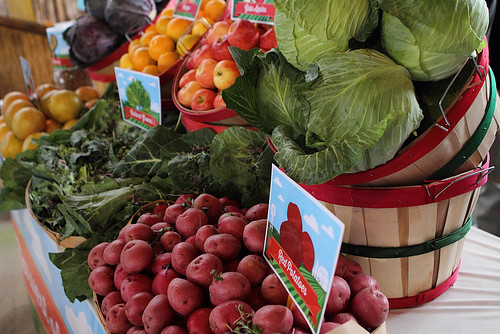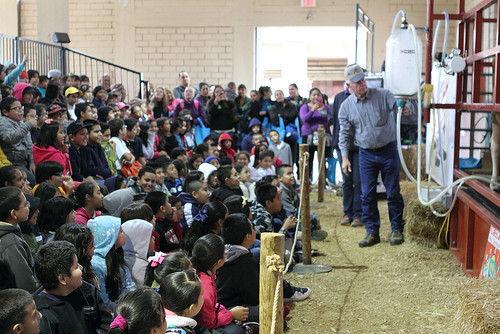
This post was written by USDA Farm to School Grantee Dallas Independent School District (ISD). Last November, the district became one of a cohort of 32 schools and districts across the country using USDA funds to spend a year planning a robust farm to school program, embedding best practices from the very start, and learning from their peers.
Guest post by Dora Rivas, Executive Director, Dallas ISD Food and Child Nutrition Services
The temperatures are below 95 degrees, there are high school football games every Friday night and the State Fair is in full swing – it must be October in Texas! October is also National Farm to School Month, a perfect time to reflect and celebrate all Dallas ISD Farm to School has accomplished over the last 12 months!
Dallas ISD is one of the largest urban school districts in the country with over 157,000 students in 220 schools, so the idea of implementing farm to school program district-wide was a bit daunting. Our first steps were to establish a definition of “local” and determine how much we were already spending on locally produced foods. The definition we settled on is “anything grown or produced within the state of Texas.” By this definition, we determined that during the 2012-2013 school year, the district had spent $9,126,070 on “local” produce, baked goods, and dairy. (Editor’s note: You can learn more about Dallas ISD’s local procurement for the 2011-12 school year at the new Farm to School Census site.)
The next step was to determine how we could increase our “local” spending. To do this, we began to identify menu items that are available seasonally and worked with our produce distributor to find farmers who could provide those items. This process resulted in the decision to initiate a Harvest of the Month program. This initiative highlights Texas grown products on the cafeteria menu; offers monthly samples of Texas grown products called “Tasty Teaser” to students; and offers educational materials for classroom teachers and parents focused on produce grown seasonally in Texas.
Our greatest achievement during the planning year was bringing together a collaborative team with diverse expertise to lead our farm to school efforts. The team has been committed to the task at hand and dedicated to meeting regularly and working diligently to meet objectives. Being under the direction of the Food and Nutrition department, we were able to have the most immediate impact on menu planning, procurement, and marketing and promotion. The team also conducted a district-wide assessment of existing infrastructure (like school gardens) and policies (like the district’s wellness plan) that might serve to support our program; is leading efforts to evaluate the effectiveness of our work; planned a robust agenda of Farm to School Month activities; and is finishing up a Farm to School Implementation Plan to guide our efforts in future years.
As our program takes root and grows, our hope is to become increasingly integrated in our district, our community, and our local agricultural economy.
Happy to Farm to School Month!

